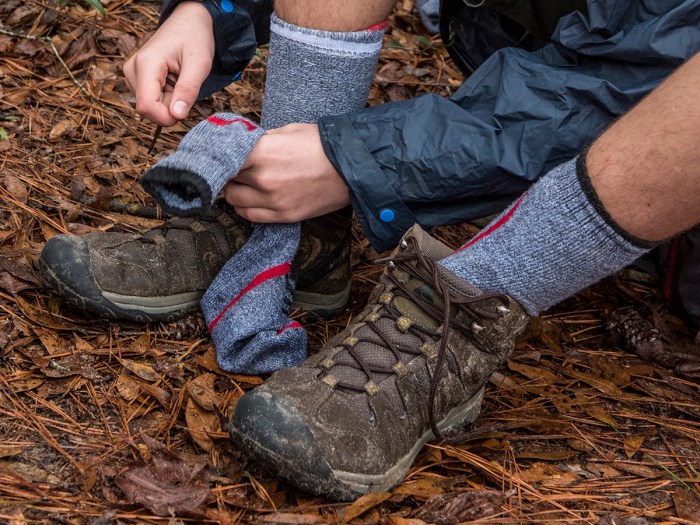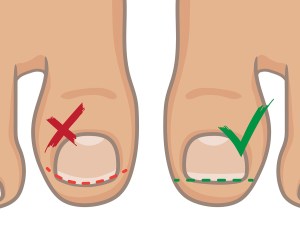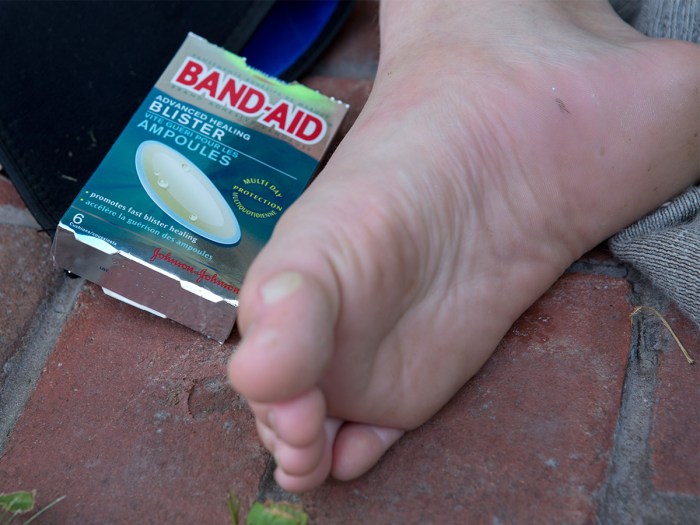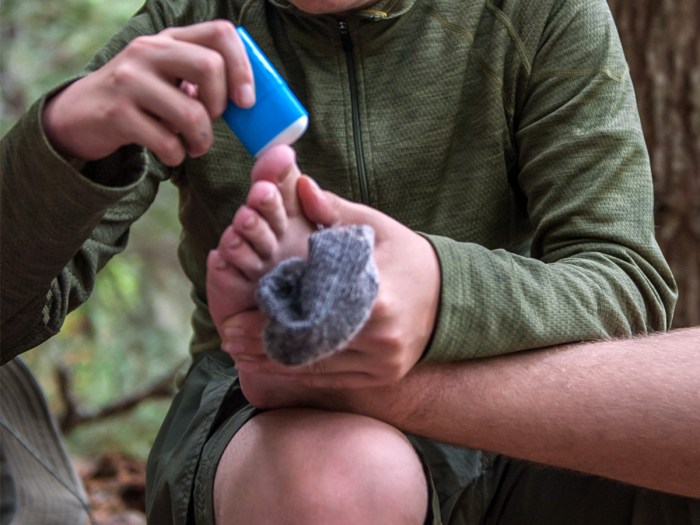Take Care of Your Feet for Happier Hiking
Whether you are on a day hike or a backpacking trip of several days, you might not even think about your feet … until problems arise. Even a short hike can turn into a miserable experience with sore or injured feet.
The majority of foot injuries result from lack of prevention rather than accident or injury. Proper care of your feet can help avoid injury and keep your feet happy, making for a happy hiker.

Proactive Foot Care
 Being proactive in the care of your feet is key to both preventing injury and keeping minor foot problems from developing into larger injuries. Proper foot care begins with washing your feet daily and drying well between your toes. Nails should be kept short and trimmed straight across to keep them from hitting the end of the shoe and causing injury around or below the nail plate.
Being proactive in the care of your feet is key to both preventing injury and keeping minor foot problems from developing into larger injuries. Proper foot care begins with washing your feet daily and drying well between your toes. Nails should be kept short and trimmed straight across to keep them from hitting the end of the shoe and causing injury around or below the nail plate.
Trail-Proven Footwear
Choose polypropylene or wool blend socks instead of pure cotton or nylon, which tend to retain moisture. Wet feet are prone to developing athlete’s foot, an itchy fungal infection of the skin. Hiking shoes or boots should be supportive and well-fitted with a secure heel and plenty of room in the toe box (the part of the shoe surrounding and protecting the toes). Be sure to test your shoes on small hikes before wearing them for a full day or longer.

Prevention
Common toenail injuries from hiking include subungual hematoma, in which a blood blister develops below the nail plate, and paronychia, in which the tissue around the toenail becomes inflamed and painful. Proper care of your toenails can prevent injury around or below the nail plate.
Blisters are a very common hiking injury that develop when blood or fluid collects between the upper layers of your skin. Numerous factors contribute to blister formation, including moisture, pressure and rubbing.
Any area that looks fine before the hike but becomes reddened during it may be a potential blister, commonly called a hot spot. Use blister pads or moleskin on these areas to prevent them from getting worse. And remember: Always wear proper socks and correctly fitting shoes.

Learn From Experience
If you are prone to blisters, you can take action before a hot spot even forms by applying a product designed to prevent a blister from developing, such as moleskin; duct tape; blister prevention tape, patches or pads; and blister spray or sticks.
Find more tips for preventing and treating blisters.
Kristine Hoffman, DPM, FACFAS, is the medical director of the orthopedic clinic at Denver Health Medical Center.
Leave a Comment